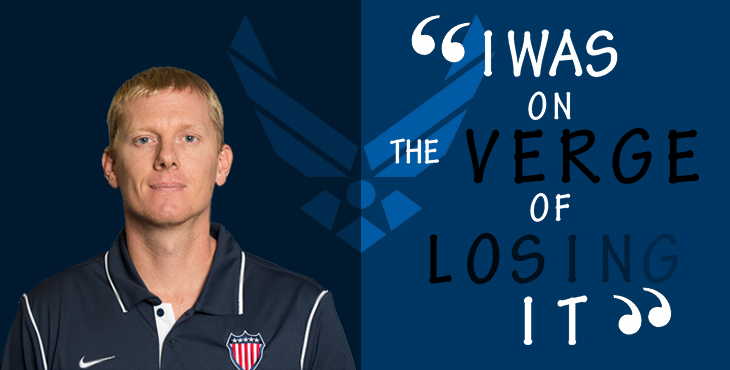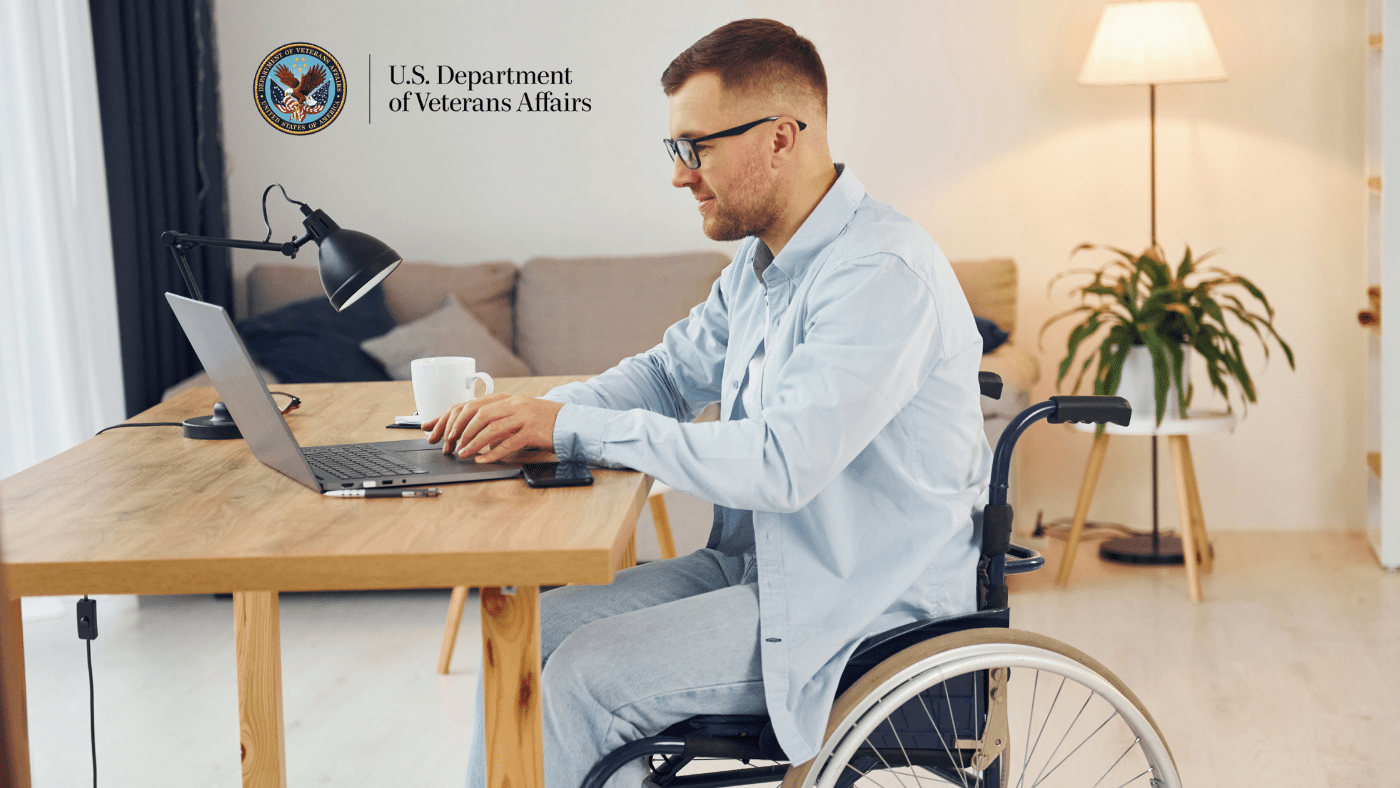Mortars began to land near Matthew Burke’s location in Afghanistan on Sept. 10, 2011. The base had prepared for a Sept. 11 “anniversary attack,” but the offensive came a day early.
During the attack, Burke set out to find a missing Airman. While searching, he hit his helmet on a cement lip while entering a bunker, causing an injury to his neck and spine. He fortunately found the person he was looking for, but had suffered a physical injury in the process.
A couple days later, he began to experience symptoms of chest pains, difficulty breathing, a rapid heart rate, and trouble sleeping. Even when he managed to sleep, he saw images of conflict. His wounds appeared to be more than just physical.
The reality of what he experienced hadn’t truly set in. So, when he was facing his anxiety, Burke was unsure what to make of it. “I didn’t understand what was happening,” he said.

Six to eight months after he returned from deployment, he was having issues. He felt emotionally imprisoned. He started to have hostile feelings toward poor leadership. Not wanting to become a hazard to himself or those around him, he sought help. Burke worked with a few different doctors, one that even challenged the legitimacy of his mental health issues. “I was on the verge of losing it,” Burke said.
Finally, a nurse case manager helped Burke navigate the medical system and guided him to the care that he needed. “Once I really raised the flag and said, ‘I’m about to hurt somebody,’ they finally stepped up,” Burke said.
The psychologists Burke worked with recommended that he be open about his experiences. “We were taught that we should talk about with our family,” he said. “So, I did, but it was opposite of the effects that I wanted.” He began seeing the residual effects of post traumatic stress disorder (PTSD) at home. His wife began to act irrational and less understanding. His children didn’t understand what he was trying to tell them. His behavior, in a way, became their behavior.
Burke contacted the family support center and talked with a child psychologist. He was disappointed in the response to his children’s situation. He needed to do more for himself and for his family. That’s when he put himself in the Evaluation and Brief Treatment of PTSD Unit inpatient program at the Southern Arizona VA Health Care System in Tucson, Arizona. The 30-day course was meant to help him transition while he coped with PTSD. The course included a number of treatments including yoga, exposure therapy, talk therapy, putting names to feelings, and other approaches to healing. On day 30, Matthew did an exercise requiring him to look into a mirror and describe what he saw and how he felt.
That’s when he finally broke.
He graduated from the inpatient program and went home. Following his moment of frailty, Burke was healing, but facing a new challenges. He had trouble with patience, decision-making, and risk assessment. Even so, Burke recognizes he his finally capable of coping with his trauma and managing the effects.
Now, he uses horticultural therapy and his work through his faith-based non-profit 10-CAN to foster his mental health. Both have established a new sense of purpose, which the veteran community has learned is crucial among post-military Veterans in their recovery. Burke also received many unique opportunities including the ability to compete in the 2014 Invictus Games.
“There’s so many positive things that have happened to me since that one negative thing that’s happened to me, that the only way that I end up worse than I started is by my own demise.”
Topics in this story
More Stories
Over the five-year program, more than 14,000 VET TEC beneficiaries completed their program and nearly half have reported finding meaningful employment with an average starting annual salary of $65,000.
VA is calling for applicants for the 2024 Specially Adapted Housing Assistive Technology grant.
Updated COVID vaccines are available free of charge to Veterans receiving care at VA .







I am rated at 70% PTSD from Vietnam. My total and permanent rating is 100%. I WAS on the way to a healthy “recovery” until the VA decided to change their rules. I moved from Minnesota to Wisconsin and the Minneapolis VAMC decided to not pay my Travel Expenses. Wisconsin, for the past 8 years has aggravated me concerning my Property Tax Credits after I jumped through all their “hoops” and did exactly as required to meet the requirements to receive my credits, they still DENY the Property Tax Credits.
I have totally given up on life and my future on this planet…and the VA does not care.
Beware of the “hand-to-hand” combat you are beginning to face!!
Matthew I am glad you shared your story. When you begin reading a negative response from those who probably live in misery and are always angry about something. Don’t even finish reading it. Why bother. Thank you! For your service. And remember it doesn’t matter what others think one bit. Conquer your emotions and leave the pass behind. God Bless
Great story about a great man! I know Mathew personally as a member of R4 Alliance. He is a model for others, and his programs are top notch.
Big deal!!
When I was in Nam, (67-68), the base I was on was mortared only once, and that was during TET! But 122mm rockets, that was a different matter. We got hit pretty regular. A sandbag bunker will stop a mortar, but forget it if a rocket landed on it. This guy hits his noggen running into a bunker and he gets PTSD from that??? Big friggen deal!! Just put your big boy tighty whities on and suck it up and continue on!! I’ve seen & heard of some excuses, but this takes the cake !!!
Whoops watch the spelling in the headlines!
English teacher
Interesting. I wonder where he found it at to bring it home. There is no such thing as PTSD. You can play all the games you want with those four letters, but no medical doctor can define them.
As a former nurse case manager for a high risk workers’ compensation team, I am delighted Mr. Burke received the care, compassion and concern his injuries required. I am also grateful to my peer, the unidentified NCM who steered him in the right direction. NCM’s can often spend more quality time to help a veteran explore and participate in the journey back to physical and mental health.
It would be most gratifying to know that outreach, through an NCM and VA resources, could help many, many more veterans who are also in a state of pain and untenable, adversarial outcomes, such as self injury, domestic violence and substance abuse, The message needs to be a strong, unified approach, that veterans do NOT have to suffer, do NOT have to deal with their issues alone, and help is sometimes just one more phone call or visit to clinic away. I would urge any veteran who is having difficulty coping with the trauma associated with deployment and its aftermath, to seek help via any NCM in their designated VA facility. NCM’s can and WILL help, but the first step still remains with the veteran. If these types of issues and symptoms are affecting either the veteran and/or his immediate family, once again, PLEASE seek out a NCM who may be the first person to access the help and resources a veteran needs to fully recover and become an integrated, functional individual again. Thank you for reading.
Hang in there Matthew!
Mario R. Munoz,
USAF-Retired
Tucson AZ
That’s wonderful for him! Yet mine goes on & on, with many good therapy sessions behind me. But the horrible thoughts & pictures in my head just won’t go away. One down, 1.2 million to go! Nice story, but don’t use it as a solution for all of us. PTDS is as unique as the individual. We still have a long way to go!
VA sucks big time
I think this is a very weak story. I don’t think a self-inflicted
Injury is a case for PTSD. Bumped his head – poor Baby! Where are the real combat hero stories that need telling?
Maybe the way the story was written implied his injury was less severe, and causes you to feel his story is weak. Every person reacts to wartime stressors differently, just as they do to natural disasters and terrorism. I would like to hear your story. If you’ve seen the results of the hazards of bringing PTSD home with you, then you can focus on the reason behind this story: the impact it had on family and the fact that nobody offered help until he admitted he was on the verge of hurting someone. Does someone really need to be that “out of control” before we offer help? I don’t care what caused the PTSD, the outcome is what’s important. Many combat hero’s stories are so intense they can’t be shared in this venue. Are you willing to share yours?
SFC Responses like that are the reason many soldiers do not seek help they need and perpetuates the myth of blood and guts mentality rampant in the military. A couple of questions? One how did he self inflict his injury as far as I know he did not willingly bang his head in the bunker? Two what gives you the right to judge the seriousness of his injury? Did you know the new combat helmets do not protect from concussive injuries-I know I had one in the new helmet with three sworn statements in case you do not believe. PTSD is not new-it was called shell shock in World War One-so mortar bombardment can qualify as a PTSD stressor- it differs for everybody. Also many soldiers were dosed with Mefloquine or Larium as a anti-malarial drug causing brain injury in a combat zone, so not even a physical injury was needed. With all due respect perhaps you should take your real soldier stories back to the American Legion over drinks because as far as I know the real combat hero stories rest with those we buried. It is sad that rank is not an indicator of intelligence-in many cases just good PT and politicking.
Post Traumatic Stress Disorder is not easily recognizable by the veteran that may suffer from the disorder. He or she needs to go to treatment in the VA that will separate the anxiety, mood swings, and depression that are associated with PTSD. Sleep apnea problems may also be related, and other various symptoms. As a PTSD patient myself
I can readily understand the frustrations that combat veterans experience. Go to see a mental health specialist at your nearest VA treating facility and start immediate therapy.